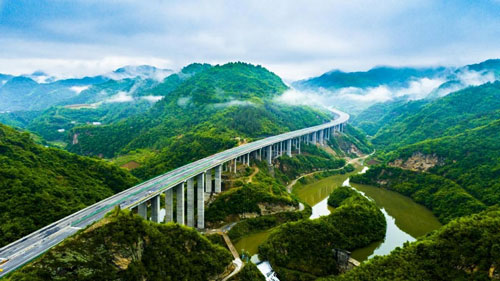Observer Report Beijing
As of the end of 2020, China’s total length of highways reached 160,000 kilometers.
Highways in China, which have been built from scratch and developed rapidly over the past three decades, have become a great window on the development, changes, and achievements of China.
China’s highway network has witnessed the country’s resolve and strength to build highways wherever possible.
Since the implementation of the country’s reform and opening-up policy, especially since the 18th National Congress of the Communist Party of China (CPC) held in 2012, the construction of highways in China has experienced leapfrog development.
By the end of 2020, almost all the Chinese cities with a population of over 200,000 had been covered by the country’s highway network.
The Beijing-Urumqi Expressway, which stretches from China’s capital city Beijing all the way west to Urumqi in Xinjiang Uygur autonomous region and spans the vast Gobi Desert, has reduced the road distance between Beijing and Urumqi by more than 1,300 kilometers.
The Ya’an-Xichang Expressway in southwest China’s Sichuan province, where half of the sections are rampways, winds along and passes through mountains and crosses over rivers, turning deep chasm into thoroughfare.
The Ningbo-Zhoushan Expressway in east China’s Zhejiang province connects islands through towering cross-sea bridges and opens up a lifeline for the islands in Zhoushan city of Zhejiang.
By prevailing over whatever challenges that lie ahead, unclogging bottlenecks, reconnecting disrupted links, and overcoming challenges, China has formed a highway network that links the eastern and western regions and runs through the northern and southern parts of the country.
Through China’s highway network, one can see the secret behind the country’s success in development.
The country’s highways extending in all directions have generated opportunities for development.
The Guangzhou-Shenzhen Expressway, one of the busiest highways in the country, links China’s Hong Kong Special Administrative Region (HKSAR) and three cities of south China’s Guangdong province, namely Guangzhou, Dongguan, and Shenzhen.
With an average daily traffic flow of 650,000 vehicles, the expressway accelerates the integrated development of Guangdong and HKSAR, drives improvement in the layout of industries and economic restructuring of cities along the route, and facilitates the emergence of a world-class city cluster.










